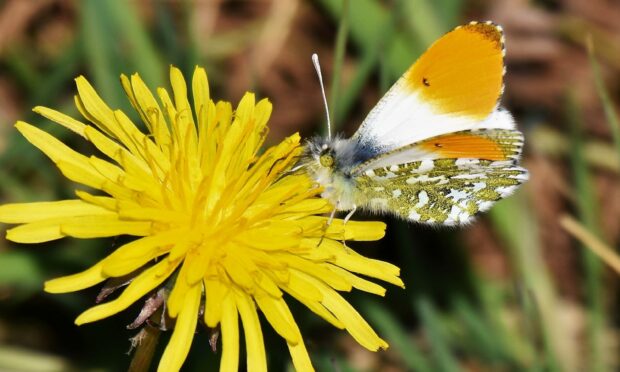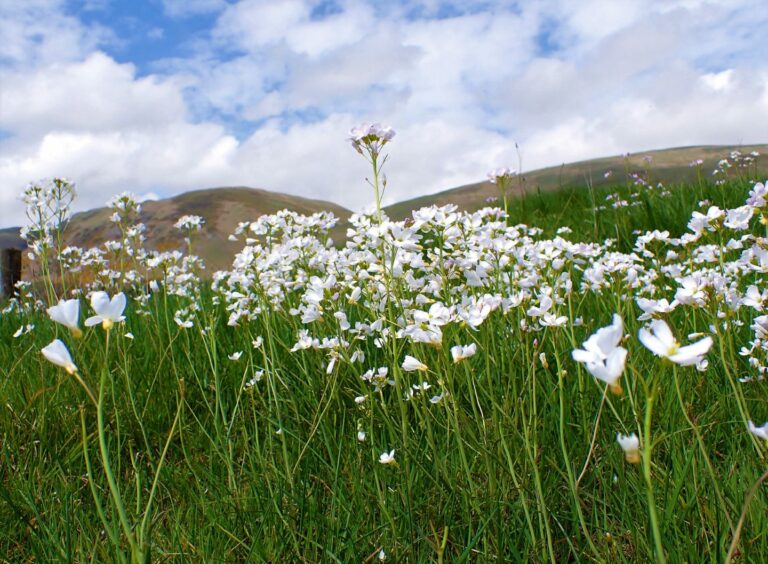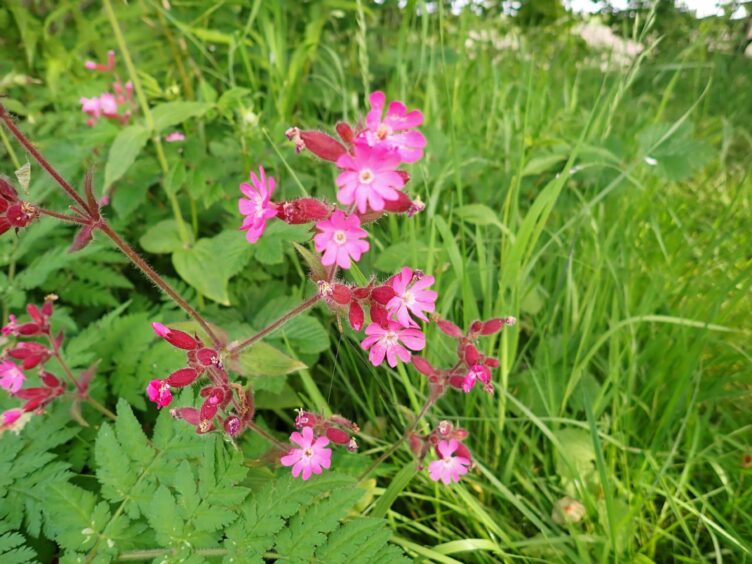Down on the haugh of the river, I have never encountered before such a profusion of cuckooflower with their delicate lilac blooms shimmering under the gentle caress of the soothing spring breeze.
Cuckooflower prospers in damp meadows, ditches and by riverbanks and is as much a colourful hallmark of spring as are newly arrived swallows or yellow-blushed primroses.
The plant is often known as lady’s-smock, which on first impression sounds lyrical, although ‘smock’ in the past was a slang term for a woman, and the name may allude to unseemly spring cavorting by country folk in our fields and pastures.
Where does cuckooflower get its name?
The more prosaic ‘cuckooflower’ is probably reference to it emerging into bloom when the first cuckoos arrive.
Where cuckooflower abounds, then most likely orange-tip butterflies will not be far away, which cast themselves upon the air like a fluttering pieces of orange and white confetti.
Along with garlic mustard, cuckooflower is one of the preferred food plants for these tangerine dreams to lay their eggs on.
The French call the orange-tip butterfly ‘aurora’, representing the glowing sun at daybreak, which is an entirely appropriate name, for their dazzling vibrancy makes the heart sing with joy.
Why so many sand martins this year?
It is wonderful to see cuckooflower doing so well on the haugh, and equally uplifting is the large number of sand martins which have returned to the river this spring.
Almost every available sand bank has been taken up by their burrows, which pockmark the river cuttings in random abandon.
One morning, I settled down on an old tree trunk to watch a colony and was rewarded by a scene of frenetic activity as the martins excitedly swooped around the sand bank.
Some clung to the sides of the bank, which they methodically excavated with their beaks to create nesting tunnels.
I am not sure why there are so many sand martins this year.
Possibly they had enjoyed a good breeding season last year, or perhaps the environmental conditions on their wintering grounds in the Sahel region of Africa were ideal, ensuring a high survival rate.
Conversely, I have seen very few house martins so far, and their numbers seem to dwindle in my home village with each passing year.
Wildflowers in bloom
Other wildflowers have been catching my eye.
The white-frilled petals of greater stitchwort shine out from every hedge bank, as do sweeps of bluebells, ramsons and red campion.
One of my favourites is the water aven, an under-stated little flower that prospers in damp margins.
The nodding, purple and orange bell-shaped flowers are easy to miss such is there underlying subtlety.
Yet, when one hunkers down close to examine the flowerheads in more detail, they are an epitome of exquisite floral beauty.
This is a time of year to savour, for this magical spring flowering brilliance that brings colour across the countryside is but a fleeting seasonal joy.
In only a matter of a weeks’ time, many of these flowering gems will have wilted, leaving behind a gaping chasm and the sorrow of a season just passed.





Conversation